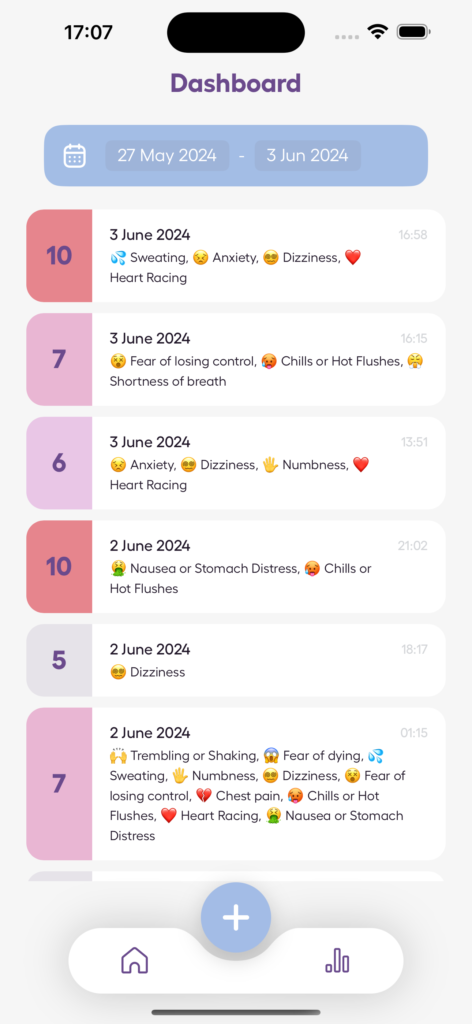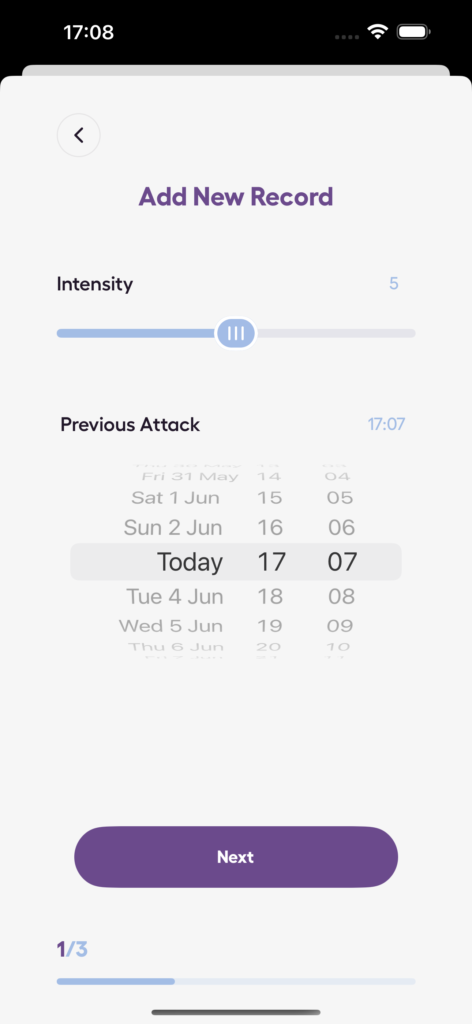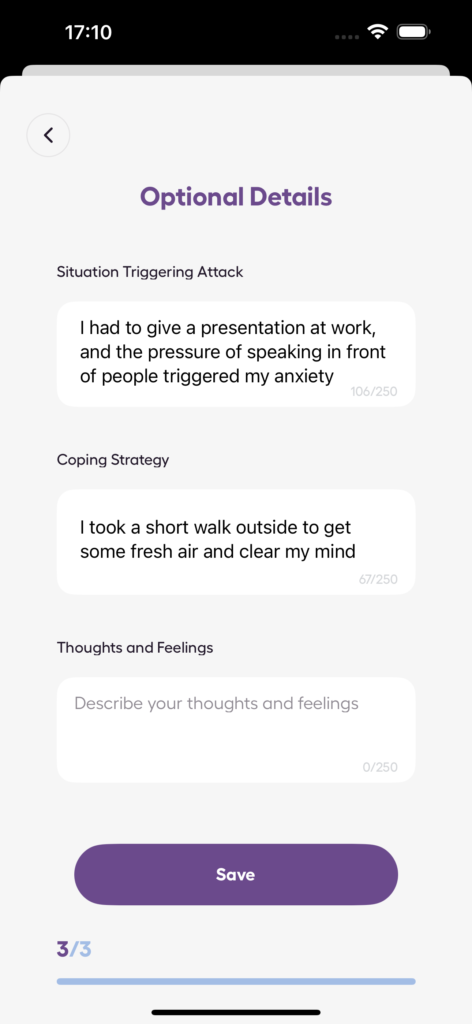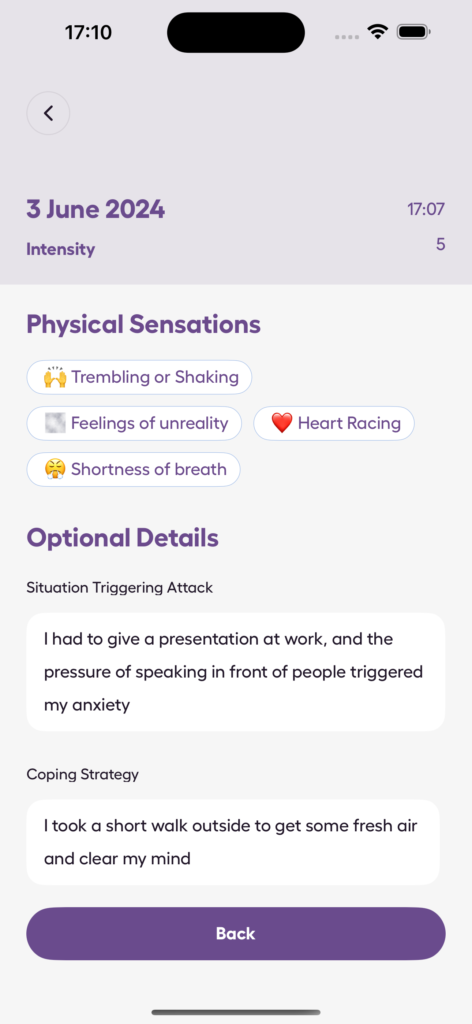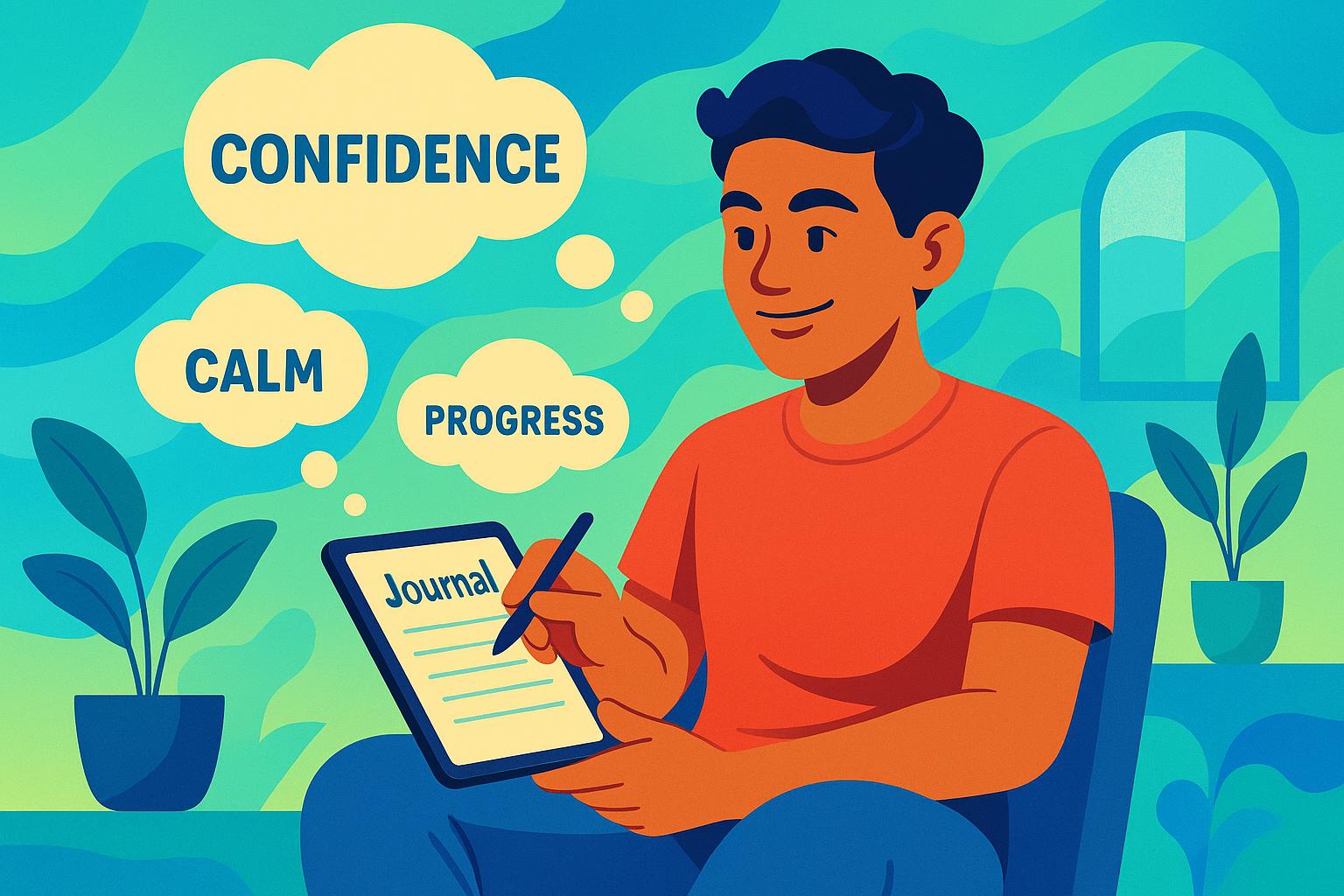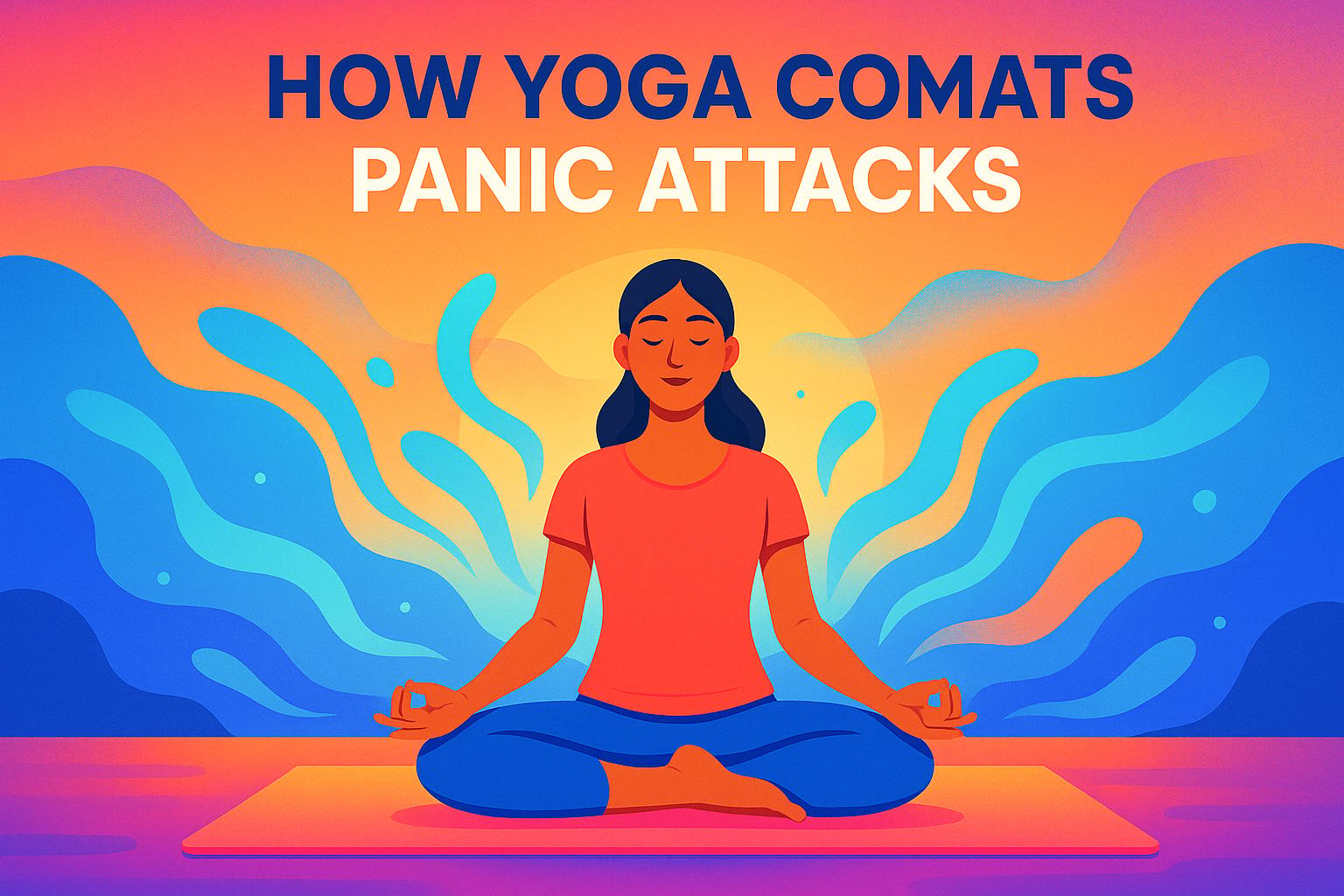Panic attacks are sudden, intense episodes of fear that can cause severe physical symptoms like a racing heart, trembling, and difficulty breathing. While they may feel random, understanding their triggers can help you manage and reduce their frequency. Here are the top five psychological triggers behind panic attacks:
- Stressful Life Events: Major changes like losing a job, divorce, or financial struggles often precede the first panic attack. Even positive transitions, like moving or becoming a parent, can contribute.
- Negative Thinking Patterns: Cognitive distortions, such as catastrophizing or emotional reasoning, can escalate everyday worries into panic.
- Past Trauma and Childhood Experiences: Early-life adversity, such as abuse or neglect, can create lasting effects, making individuals more prone to panic attacks.
- Social Situations and Fear of Judgment: Anxiety about being evaluated or humiliated in public can trigger panic, especially in those with social anxiety disorder.
- Conflict and Relationship Issues: Arguments, criticism, and control struggles in relationships often act as triggers.
What Triggers Panic Attacks?
1. Stressful Life Events
Major life changes and difficult circumstances can overwhelm your ability to cope, often leading to panic attacks. Studies reveal that in 80–100% of cases, a significant stressful event preceded an individual’s first panic attack. These events create intense pressure and uncertainty, pushing your nervous system into overdrive.
Common triggers include situations like losing a job, going through a divorce, facing the death of a loved one, dealing with a serious illness, or experiencing a financial crisis. Even positive but significant life transitions – such as moving to a new city, starting college, or becoming a parent – can contribute to panic symptoms. Beyond these major events, ongoing stress from work or personal relationships can also play a role.
Workplace stress is a major factor for many Americans. Whether it’s a demotion, a layoff, or simply the constant worry about job security, these challenges can gradually increase panic symptoms over time.
The physical toll of these stressors is hard to ignore. When you encounter major life events, your body releases higher levels of stress chemicals like adrenaline. This heightened state of arousal can lead to hyperventilation and other symptoms typically associated with panic attacks.
Financial stress is another common trigger. Money worries – whether related to debt, overdue bills, or insufficient savings – affect millions of people daily. The constant anxiety about meeting basic needs or planning for the future can easily spiral into panic. This combination of uncertainty and daily pressures often creates the perfect conditions for panic symptoms to emerge.
Traumatic experiences also have a strong link to panic attacks. Events such as car accidents, witnessing violence, experiencing harassment or domestic abuse, or surviving disasters like fires can trigger immediate panic responses and leave you more vulnerable to future episodes.
To reduce the impact of these triggers, developing healthy routines is essential. Regular sleep, physical activity, and strong support networks can make a big difference. If financial stress is a concern, consulting a financial advisor may help you regain a sense of control.
Additionally, small but meaningful actions – like taking breaks from news and social media, spending time outdoors, and connecting with trusted friends or family – can help lower your overall stress levels. Managing stress effectively is a key step in reducing the frequency of panic attacks.
2. Negative Thinking Patterns
Negative thinking patterns, also known as cognitive distortions, can turn everyday worries into overwhelming panic. These distorted ways of thinking often exaggerate problems and fuel anxiety and stress. When you fall into these mental traps, small concerns can quickly spiral into intense fear.
"In treating individuals with anxiety disorders, one area of focus is negative thinking patterns. The unhelpful or unkind things individuals say to themselves have a negative effect on their mental health. Helping others to recognize these thinking patterns and learning to be kinder and more forgiving of oneself is a great place to make a positive impact."
– Jennifer Bosch, MSW, LGSW, Outpatient Therapist at Nystrom & Associates
The Most Common Thinking Traps
- Catastrophizing: This involves assuming the worst-case scenario. For example, interpreting mild chest tightness as a heart attack can lead to unnecessary panic.
- All-or-Nothing Thinking: This pattern views situations in extremes, leaving no room for middle ground. For instance, missing one day at the gym might make you feel like your entire fitness routine is ruined, leading to self-criticism and added stress.
- Emotional Reasoning: Here, feelings are mistaken for facts. If you feel anxious while flying, you might believe flying is inherently unsafe, even though statistics show otherwise.
- Overgeneralization: A single negative experience is seen as a universal truth. For example, if one friend declines an invitation, you might think, "No one wants to spend time with me." This type of thinking is particularly common in those with anxiety or post-traumatic stress disorder.
The Worry-Rumination Cycle
Constant worry and repetitive negative thoughts can turn minor concerns into full-blown panic attacks. This cycle of rumination keeps your mind stuck in a loop, amplifying anxiety.
Breaking Free from Mental Traps
The good news? You can challenge and change these thinking patterns using simple techniques like cognitive restructuring.
One effective method is "catch it, check it, change it". Start by noticing an unhelpful thought, evaluate its accuracy, and then reframe it in a more realistic way. For example, instead of thinking, "I’m going to fail this presentation", remind yourself, "I’ve prepared well and can handle this."
Keeping a thought record can also help. Write down the situation, your mood, and the automatic thoughts that arise when anxiety strikes. For instance, replace "I always mess things up" with "I’ve made mistakes before, but I usually work hard and do my best". Similarly, challenge rigid "should" statements. Swap "I should never make mistakes" with "I’m learning and growing, and it’s okay to not be perfect".
Mindfulness meditation is another powerful tool. By observing your thoughts without judgment, you can reduce their emotional impact and prevent them from escalating into panic. Changing these ingrained patterns takes patience and practice, but the goal isn’t to eliminate all negative thoughts. Instead, it’s about recognizing distortions and responding to them with kindness and realistic thinking.
3. Past Trauma and Difficult Childhood Experiences
Childhood trauma often leaves deep scars that can resurface later in life, triggering panic attacks. Events from our early years can leave a lasting imprint on both mind and body, increasing the likelihood of anxiety disorders in adulthood.
"It has been well established that traumatic events may trigger anxiety disorders, especially in someone who is susceptible because of additional biological or social factors." – Nicole Amesbury, LMHC, psychotherapist, and Head of Clinical Development at Talkspace
This connection is further supported by data highlighting the prevalence of childhood adversity and its long-term effects.
The Hidden Impact of Childhood Adversity
Adverse Childhood Experiences (ACEs) – such as abuse, neglect, or trauma before the age of 18 – are more common than many realize. Nearly half of children in the U.S. encounter at least one ACE. These early challenges can lead to lasting changes in brain development due to prolonged stress responses.
Children who experience four or more ACEs are 1.7 times more likely to develop anxiety disorders. Currently, 9% of children are affected by anxiety, while 4% struggle with depression.
How Trauma Becomes a Panic Trigger
Trauma from childhood doesn’t always disappear – it can remain buried until something triggers it, leading to panic attacks. The way children process traumatic events plays a critical role in shaping their mental health as adults. For example, severe threats to family safety may later evolve into panic disorders, and even specific phobias can develop from a single traumatic event during childhood.
"The more confusing and complex the experience(s) are, the more difficult it can be for the child (and then adult) to feel secure and safe, especially, if a caregiver was not able to help the child after the experience." – Nicole Amesbury
Recognizing Trauma-Related Panic Signs
Unresolved childhood trauma often shows up in surprising ways during adulthood. You might notice intense, unexplained reactions to certain people or places that remind you of past events. Other signs include extreme mood swings, difficulty forming attachments, and heightened anxiety over everyday stressors. Physical symptoms – like trouble sleeping, persistent fatigue, or unexplained aches – may also be linked to past trauma. In some cases, individuals may feel overwhelmed by ordinary situations or display childlike behaviors when under stress.
Flashbacks, where you relive traumatic events, can quickly lead to panic attacks. These episodes are sometimes accompanied by a sense of detachment from your emotions or thoughts, a phenomenon known as dissociation.
Breaking Free from Trauma’s Grip
Acknowledging the impact of trauma is the first step toward healing. Fortunately, therapies designed to address trauma can significantly reduce panic attacks tied to childhood experiences. Trauma-Focused Cognitive Behavioral Therapy (TF-CBT) uses structured techniques to help process and manage traumatic stress. Similarly, Eye Movement Desensitization and Reprocessing (EMDR) provides a safe way to revisit and work through painful memories.
Incorporating mindfulness and meditation into daily life can help ground you in the present, making it easier to manage flashbacks before they escalate into panic. Regular physical activity can also alleviate anxiety by releasing built-up tension. Finally, building a reliable support network can help recreate the emotional safety that may have been missing during childhood. Addressing these early wounds through therapy not only eases current struggles but also reduces the likelihood of future panic triggers.
sbb-itb-b1dedcc
4. Social Situations and Fear of Judgment
Social situations can often ignite a deep fear of judgment. The worry of being scrutinized, evaluated, or humiliated in public can create the perfect conditions for a panic attack. This isn’t just about being shy – it’s an overwhelming, persistent fear of negative judgment.
"Underlying social anxiety disorder is the fear of being scrutinized, judged, or embarrassed in public." – Melinda Smith, M.A. and Jeanne Segal, Ph.D., HelpGuide.org
Social anxiety disorder affects between 5% and 10% of the global population, making it the third most common mental health condition, following substance use disorder and depression. For those who experience it, this fear can feel all-encompassing, making even routine activities seem insurmountable.
When Everyday Activities Feel Overwhelming
While public speaking is a well-known trigger, it’s not the only one. Ordinary interactions – like meeting new people, going on dates, attending job interviews, or even asking a cashier a question – can spark intense anxiety. More private moments, such as eating or drinking in front of others, using public restrooms, or taking phone calls where others might listen, can also be daunting. Even social events that many people look forward to, like parties or group conversations, can feel like minefields.
The Endless Loop of Social Anxiety
Social anxiety often creates a vicious cycle. The fear of messing up can actually increase the chances of stumbling, as the mind becomes hyper-focused on every nervous symptom – like sweaty palms, a shaky voice, or a racing heart. This heightened awareness can make it feel as though everyone is watching and judging, even though most people are preoccupied with their own concerns. Over time, avoiding social situations only reinforces the anxiety, making it even harder to break free.
Steps Toward Regaining Control
Managing social anxiety is possible with the right strategies. Start by challenging negative thoughts – ask yourself if your fears are realistic or helpful. Redirecting your focus outward, toward the people around you, can help build genuine connections. Techniques like controlled breathing and grounding exercises, such as the 333 rule, can help ease panic symptoms. Gradual exposure to social situations – starting small with brief greetings and moving toward more extended interactions – can also be effective. Additionally, lifestyle changes like cutting back on caffeine, staying active, getting enough sleep, and moderating alcohol consumption can help lower overall anxiety levels. These steps, combined with earlier coping techniques, can help you better understand and manage your triggers.
5. Conflict and Relationship Issues
Relationship conflicts – whether it’s arguments, criticism, or control struggles – can often set off panic attacks. Recognizing this trigger is key to applying effective strategies, similar to those used for other psychological triggers.
"Sometimes the fear of detachment or conflict throws people into an absolute panic." – Jacqueline Karaca
Statistics show that women are more likely to develop anxiety disorders and report anxiety symptoms tied to relationship issues. Additionally, individuals with anxiety disorders are more likely to remain single or experience higher divorce rates.
The Hidden Triggers in Daily Interactions
Daily interactions can hold subtle but powerful triggers, such as ongoing criticism, unpredictable behavior, or control issues. Constant criticism can create a sense of inadequacy, leaving you hypervigilant and bracing for the next negative comment or disapproving glance. Unpredictable behavior from a partner might make you feel like you’re constantly walking on eggshells. Control issues, like excessive monitoring or restricting your independence, can chip away at your self-confidence and intensify feelings of anxiety.
When Conflict Becomes Overwhelming
During heated conflicts, panic can manifest in ways that disrupt communication and resolution. You might shut down emotionally, react impulsively, or experience intense crying fits. Physical symptoms like sleeplessness, trouble concentrating, or even a tight chest and shortness of breath around your partner are also common. Over time, some people may begin avoiding their partner altogether or find themselves triggered by even minor disagreements.
Breaking the Cycle
Tackling these challenges starts with effective communication. Using clear "I" statements can help express your feelings without placing blame. For instance, instead of saying, "You always criticize me", try, "I feel hurt when I receive criticism." This approach encourages understanding rather than defensiveness.
Active listening is another powerful tool. By giving your partner your full attention and asking open-ended questions, you can foster a deeper understanding and create space for constructive conversations. If emotions run high, taking a short timeout can help both of you cool down and prevent escalation.
Establishing healthy boundaries is equally important for your mental well-being. Know your limits, communicate them clearly, and respect your partner’s boundaries as well.
It’s also crucial to remember that acceptance doesn’t mean tolerating harmful behavior. Instead, it means focusing on how you respond to unwanted actions. Control what you can: your reactions, your boundaries, and your emotional regulation. Tools like the Anxiety Journal Panic Attack & Anxiety Tracker app (https://anxiety-journal.com) can help you log your experiences and monitor stress levels over time.
If relationship conflicts continue to trigger panic attacks, seeking professional help – whether through individual therapy or couples counseling – can provide fresh perspectives and effective strategies for managing both your anxiety and relationship dynamics. These approaches can work hand-in-hand with earlier techniques for handling panic triggers, helping you build a more balanced and resilient mindset.
How to Identify and Manage Your Triggers
Understanding and managing your triggers is a key step in taking control of panic attacks. Since these episodes can often feel random, tracking and identifying patterns is essential. Awareness of your triggers lays the foundation for effective practices like journaling and mindfulness, helping you respond proactively rather than reactively.
Building Awareness of Your Triggers
Start by keeping a detailed record of when and where your panic attacks happen. Note everything – time, location, people you were with, your thoughts, and physical sensations. These details might seem minor, but they can reveal important patterns over time.
Pay attention to your physical and emotional symptoms. Recognizing these early signs can make it easier to manage anxiety before it escalates into a full-blown panic attack.
If you prefer a digital approach, tools like the Anxiety Journal Panic Attack & Anxiety Tracker app (https://anxiety-journal.com) can help. These apps allow you to log your experiences immediately, ensuring you don’t miss valuable details.
Journaling to Spot Patterns
Once you start tracking your experiences, journaling becomes a natural next step. Writing down your thoughts and emotions can help you identify recurring themes, challenge negative thinking, and plan solutions. Research backs this up – a 2018 study found that emotion-focused journaling reduced anxiety, distress, and even depressive symptoms.
"Journaling is a highly recommended stress-management tool that can help you reduce anxiety, lessen feelings of distress, and increase well-being. It can be a way to untangle your thoughts, process emotions, identify patterns, and find some clarity in that mental chaos."
– Elizabeth Scott, PhD
You don’t need to spend hours journaling. Just 5–15 minutes of freewriting – jotting down whatever comes to mind – can be incredibly revealing. Over time, this practice can help you notice thought patterns and track how they evolve.
Mindfulness for Present-Moment Awareness
Mindfulness is another powerful tool for identifying triggers and managing your responses. By focusing on the present moment, mindfulness helps interrupt unhelpful thoughts, relax your mind, and shift negative patterns. Studies show that nearly half of our waking hours are spent in mind wandering, which is often linked to unhappiness. Simple practices like focusing on your breath or meditating for a few minutes each day can help you stay grounded.
You can also incorporate mindfulness into daily activities. Try mindful walking or eating – fully focus on the sensations and experiences of the moment. These small habits can build a consistent sense of awareness throughout your day.
Cognitive and Behavioral Techniques
Once you’ve identified your triggers, Cognitive Behavioral Therapy (CBT) can help you reshape the way you think about and respond to them. CBT focuses on examining and changing the associations between your thoughts, emotions, and behaviors. One study even found that Internet-based CBT, which includes therapist guidance and self-administered exercises, was an effective treatment for panic disorder.
Grounding techniques are another helpful strategy. These involve using sensory or cognitive methods to bring yourself back to the present moment. For instance, you might focus on the feel of an object in your hand or mentally walk through a calming scene.
Controlled breathing is especially useful during panic attacks. Slowing your breath to fewer than 10 breaths per minute with deliberate inhalation and exhalation can help calm both your body and mind. Pair this with affirming your safety and labeling your emotions to regain control.
In-the-Moment Strategies
When you encounter a trigger, shifting your focus to external details can help. Try distracting yourself by counting backward in threes from 100, recalling the lyrics to a favorite song, or observing the sights and sounds around you. Techniques like guided imagery – imagining a peaceful place – or progressive muscle relaxation, where you tense and release muscle groups, can also redirect your attention.
Building a Strong Foundation
Healthy habits like eating well, staying active, and getting enough sleep are essential for managing anxiety. These lifestyle choices support your efforts to identify and manage triggers, creating a well-rounded approach to preventing panic attacks. Combined with journaling, mindfulness, and cognitive techniques, these habits create a strong foundation for long-term relief.
Conclusion
Recognizing your psychological triggers is a crucial step in taking back control over panic attacks. These triggers might stem from stressful events, negative thought patterns, past trauma, difficult social interactions, or relationship challenges. By pinpointing them, you gain the ability to respond thoughtfully instead of feeling overwhelmed when they surface.
Once you understand what sparks your anxiety, you can shift from feeling powerless to actively managing your responses. This awareness allows you to create specific strategies to lessen the frequency and intensity of future episodes.
A practical starting point is tracking when and where your panic attacks occur. Tools like the Anxiety Journal app can make it easier to log your experiences and spot recurring patterns. Journaling and mindfulness, as mentioned earlier, are powerful tools in this process.
With guidance from mental health professionals, you can explore coping methods like grounding techniques, slow breathing exercises, mindfulness practices, or cognitive behavioral approaches. These tools can help you build resilience and regain a sense of control over your anxiety.
FAQs
What’s the difference between normal anxiety and a panic attack caused by psychological triggers?
Normal anxiety usually develops in response to stress or worry and is often linked to specific situations, like meeting a tight work deadline or attending a social event. It tends to build up gradually and feels manageable over time. Panic attacks, however, are a completely different experience. They strike suddenly and bring an intense wave of fear that can feel completely overwhelming. These episodes often come with physical symptoms such as a pounding heart, shortness of breath, dizziness, or sweating.
What makes panic attacks even more challenging is that they can occur seemingly out of nowhere, without a clear cause or warning. Recognizing your own patterns and triggers can be a useful step in managing these episodes. Keeping a journal to track your symptoms and stress levels might help you pinpoint potential causes and figure out strategies to address them.
How can I manage panic attacks caused by negative thinking?
To handle panic attacks sparked by negative thoughts, start by reframing your mindset. Question the accuracy of those negative thoughts and replace them with more balanced, realistic alternatives. This shift can help take the edge off the emotional weight these thoughts carry.
Another helpful approach is trying grounding techniques. For instance, the 333 rule – naming three things you can see, three things you can hear, and three things you can feel – can bring your attention back to the present moment. Pair this with mindfulness practices or deep breathing exercises to further ease your mind and alleviate panic symptoms. With consistent use, these methods can help you break the grip of negative thought patterns and regain control over your emotional state.
How does childhood trauma increase the risk of panic attacks later in life?
Childhood trauma leaves a deep imprint on the brain, shaping how it handles stress and fear. Over time, these changes can increase a person’s risk of developing anxiety disorders and experiencing panic attacks later in life.
When traumatic events occur during childhood, they can heighten sensitivity to stress, disrupt emotional regulation, and trigger an overactive fight-or-flight response. Together, these factors create a foundation where panic attacks can emerge in adulthood. Seeking therapy or adopting self-care practices can play a key role in addressing these root causes and managing anxiety effectively.


